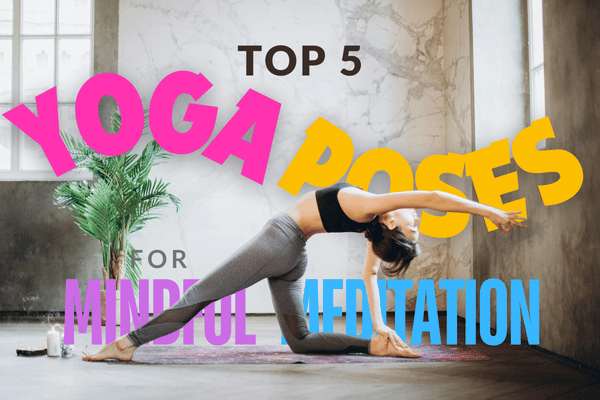Top 5 Best Yoga Poses for Mindful Meditation. Yoga is a traditional exercise that has been practiced for more than a thousand years, according to the monk yoga offers mental clarity, inner satisfaction, and relaxation and has an amazing ability to combine physical positions with conscious meditation.
Best tips for Yoga Poses for mindful meditation (suggested by experts ):
- Savor Savansa: At the end of your every Yoga session, take some time to rest in the Savansa pose, this will provide you with mind refreshment and a significant chance for interrogation.
- Stay Hydrated: Drinking ample water before and after Yoga will help you perform your exercise more effectively and relax your muscles.
- Always practice gratitude: While doing exercise or after exercise always cultivate a feeling of gratitude to god, for your health, body, and breath.
- Listen to Music: Listening to peaceful music before practicing yoga can help you a lot to relax your mind and will also help you to concentrate.
- Try to make your surroundings calm and soothing: Making your surroundings calm and sacred will help you concentrate on your yoga practice and foster inner peace.
Why does Yoga pose for mindful meditation matter?
Your meditation position matters a lot because it greatly impacts mind relaxation and yoga efficiency and helps you stay focused. A person performing meditation according to his comfort, stability, and flow of energy. This will help him to stay focused and avoid discomfort and pain from interfering with his practice.
Best Yoga poses for mindful meditation:
Tree Pose (Vrikshasana): This pose specifically relaxes the mind and calms the whole body, for this, you have to, stand on one leg and press the sole of the other foot against your inner thigh. You have to balance and find your center by concentrating on your breath and inner calm.
Child pose (Balasana): This is one of the most popular poses which is mainly performed for stretching and relaxation. Start performing this pose by Kneeling on the yoga mat by keeping your knees hip-width apart. Then fold forward with your arms out in front of you. You can stay in this position as long as your body is relaxed and you are calm.
Mountain poses (tadasana): Mountain poses will help you to improve your balance, posture, and concentration. To do this, stand erect with your feet hip-width apart, grounded in the floor, Now roll your shoulders back to expand your chest, stretch your spine lift your arms above, and take deep breaths.
Lotus Pose (padmasana): This pose is performed to meditate and control breath. To perform this, sit on the floor, flex the right leg on the knee, and using your hands place your right foot on your left thigh, now fold the leg at the knee. In last, again use your hands to bring your left foot to rest on your right thigh.
Eagle pose (Garuasana): Wrap your arms around each other and cross one leg over the other. This stance will help you to build balance and mindfulness.
What are some breathing techniques for meditation?
Breath awareness: Concentrating on your breath while performing meditation can boost your overall meditation. Just like when we are in the gym and trying to make the muscle-mind connections for better muscle gains, similarly while doing yoga we have to focus on our breath as it flows in and out, experiencing the sensation of each inhale and exhaling, this technique will upgrade your overall yoga experience.
Examine changes in your body: Noticing changes in your body while performing meditation can help you a lot in relaxing your body and staying focused during your meditation.
Open monitoring: Simply monitor your thoughts and feelings without being engrossed in them, as, this will help you to gain awareness and separation from mental activity.
Conclusion:
Yoga positions play a vital role in developing your mental and physical health, as by controlling your breath and changing body poses you are controlling your blood flow and increasing flexibility and strength to lower stress and develop awareness.
Ultimately Yoga positions facilitate self-discovery, strengthen mental health, regulate blood flow, and stress reduction, and lastly improve overall well-being.


1 Comment
Very informative